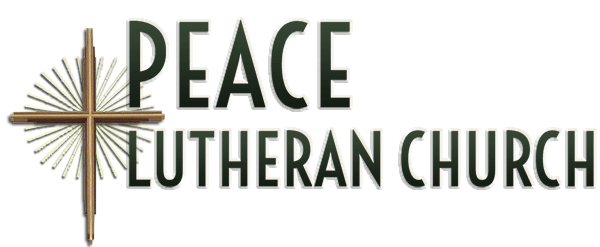Text for the Day: Luke 2:22-40 – Simeon & Anna in the Temple
Images of the Temple: Revealing an unexpected salvation
Luke’s gospel draws the Temple in Jerusalem as an important symbol.
The gospel opens at the Temple, where a priest named Zechariah is chosen by lot to enter the sanctuary of the Lord and offer the gift of incense on behalf of the people. During that service, an angle visits and informs him that, in their old age, he and his wife Elizabeth will become parents to a child. The angel instructs Zechariah to name him “John,” and he will proclaim the coming of God’s Messiah.
Luke’s gospel is the only one to tell the story of Mary and Joseph’s pilgrimage to Jerusalem when Jesus was 12. When the family left to return home, Jesus remained behind in the Temple. When his parents came looking for him, Jesus’ response was, “Did you not know that I must be in my Father’s house?”
What I’m pondering this Christmas is how we can help others who are searching to recognize God at work in places and ways they were not expecting.
When Jesus was tempted in the wilderness, the writer of Luke places the third and final temptation at the pinnacle of the Temple. In that scene, Satan suggests that Jesus throw himself off and call on God’s angels to protect him.
Ritual Purity vs. Grace
The entire gospel carries the underlying theme of Jesus’ declaration of God’s overwhelming grace. That grace contrasts with the sacrificial purity system of the scribes, Pharisees and high priests that is centered in the Temple.
“The Purity System of Jesus’ day was, in his eyes, a corruption of the Jewish understanding of God, because it created victims – the poor, marginalized, diseased, women, foreigners and sinners. Jesus was unequivocal in his opposition to that understanding, and proclaimed and lived out an understanding of God as radically gracious, merciful and inclusive,” theologian Lawrence Moore writes.
The final week of Jesus’ life portrayed in the gospel of Luke begins with the cleansing of the Temple. Jesus condemns the religious authorities for turning what was meant to be a “house of prayer” into a “den of robbers.” This sets off a final clash that ends with Jesus’ crucifixion.
So there is great significance in this unexpected meeting in the Temple of Mary, Joseph and the infant Jesus with two people, Anna and Simeon. Anna and Simeon are portrayed as true representatives of the ancient tradition. They are old, they virtually live in the Temple, they are “waiting for God’s salvation,” and they have a prophetic ministry – a Spirit-directed ministry.
Simeon even has a direct promise from God that he will witness God’s salvation before he dies. In Simeon’s song of praise, we can hear echoes of God’s promise to an elderly, childless Abraham that he will father a nation.
New understanding of God’s salvation
Anna and Simeon recognize the nature of God’s salvation in Jesus. They are the bridge between the ancient tradition and the Jesus-purified Temple. Luke brings us to the Temple to begin the story he is about to tell, a story that reveals the truth about the loving and gracious nature of God.
The orthodox tradition pointed to a warrior king in the tradition of David who would bring a national liberation to the people of Israel. Anna and Simeon’s recognition of the infant Jesus as the inauguration of God’s promised salvation is a clear sign of their openness to the work of the Holy Spirit. Simeon declares that this is a salvation that God has “prepared in the presence of all peoples.” While it will bring glory to Israel, it also brings “a light for revelation to the Gentiles,” which embraces every human being in God’s plan for salvation.
Jesus appears at the Temple at age 12 – just before reaching the age of 13, when he would become obligated to obey the commandments. This, with the boy Jesus’ declaration of God as his “Father,” carries tremendous symbolism as he prepares to inaugurate a new way of understanding humanity’s relationship with God.
Certainly not what anyone of that time was expecting.
Opening ourselves to God’s unexpected
So what I’m pondering this Christmas is how we can become more open to the work of the Holy Spirit today. How we can see God at work in unexpected ways and unexpected places. How we can help others who are searching to recognize God at work in places and ways they were not expecting.
How can Anna and Simeon’s story be much more than an ancient tale and become an inspiration for us more than 2,000 years later?
Seeing Jesus today
A friend and colleague of mine recently posted this quote from Stanley Hauerwas, a well-known American theologian:
“That I go to church does not mean I think Jesus is only to be found there. It just means that he has promised to show up there in a manner that can help us discern how he shows up in other places.”
That’s why we’ve reclaimed the ancient practice of celebrating Holy Communion on the Sabbath because, when Jesus first shared this meal with his disciples, he taught them to recognize his presence in bread and wine: “This is my body, this is my blood; do this…and remember me.”
Remember that I sought out those who are suffering, those who are oppressed by human systems of power and privilege, those who are shunned because they don’t meet human-established standards of respectability, those who are poor and hungry while living in the shadow of great buildings, constructed as monuments to human power and greed.
Remember that I did not turn away from those who are blind or crippled or diseased, or call them cursed; I looked on them with love, touched them and healed them.
Remember that, while I am your Lord and Master, I knelt, as a servant at your feet, and washed them.
Remember that, even though you betrayed me, denied me, and abandoned me, I gave my life for you;
Because I wanted you to know that God, your Father, is present in this world through healing, grace, forgiveness, kindness, compassion, generosity, sacrifice.
God’s table is for remembering
And so we come to this table of Holy Communion to receive ordinary bread and wine, because it is through ordinary things that God shows up.
We come to this table to receive bread and wine because Jesus has promised us that he will be present there; not because of anything we’ve done; not because we say the right words; not because we’ve earned a place here; but because Jesus has invited us to come, just as we are.
There is a character in a series of children’s books named Waldo. He appears in a series of books and games called “Where’s Waldo?” With his striped shirt, pom-pom-topped beanie and glasses, Waldo looks as though he’d be easy to find, even in a crowd.
But we quickly discover that it’s not so easy to find Waldo in the crowded, colorful and chaotic scenes of his books.
But after a while, after you’ve become accustomed to ignoring the chaotic scenes and learned to hone in on the boy with the striped shirt, glasses and pom-pom beanie, you discover it becomes much easier to find Waldo.
We come here, to hear God’s Word, to hear the teachings of Jesus, to receive his presence in bread and wine, so that we can go back into the chaos of the world with a better sense of where to look for Jesus. And when we find him, to help others see him as well.
So come to the Lord’s table, taste and see that the Lord is good. Then, like Simeon; depart in peace to watch for Jesus in places we may not expect.
Amen.
– Pr. Eileen Smith Le Van


